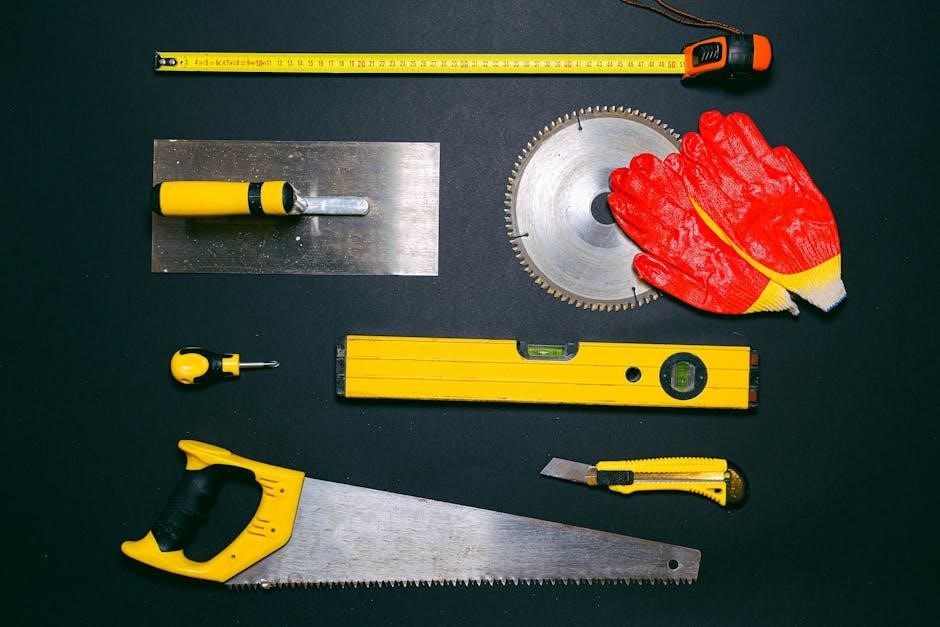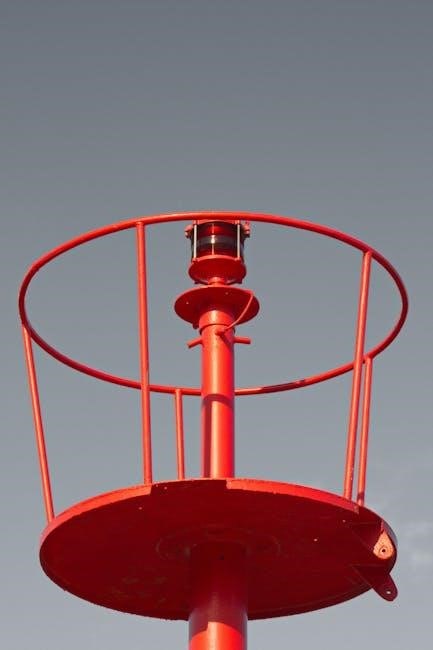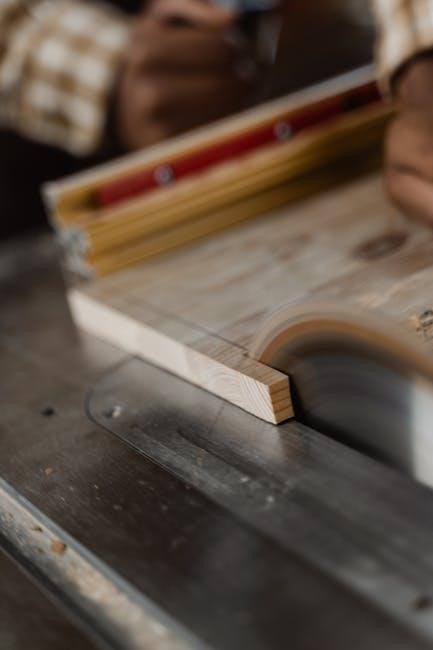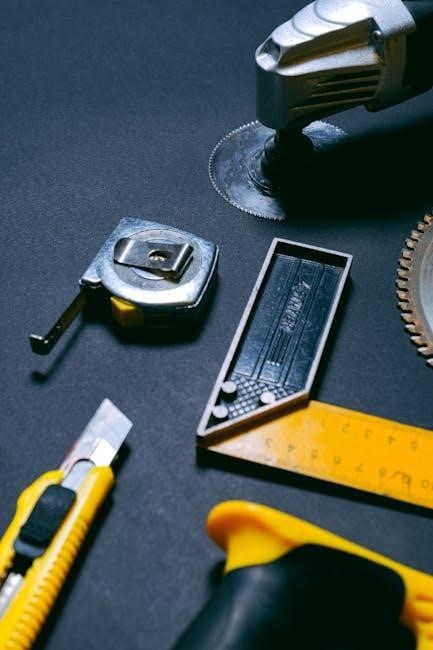Circular saw blades have various teeth designs and counts for different purposes, including woodwork and metal cutting, with a range of options available to suit specific needs and applications perfectly always․
Overview of Circular Saw Blades
Circular saw blades are a crucial component in various woodworking and construction projects, offering a range of benefits and advantages․ They are designed to rotate at high speeds, allowing for efficient cutting and shaping of materials․ The blades are typically made from high-quality steel or other durable materials, ensuring longevity and resistance to wear and tear․ With proper maintenance and handling, circular saw blades can provide accurate and precise cuts, making them an essential tool for professionals and DIY enthusiasts alike․ Furthermore, the blades are often designed with safety features, such as reinforced teeth and protective coatings, to minimize the risk of injury or damage․ Overall, circular saw blades play a vital role in many industries and applications, and their quality and performance can significantly impact the outcome of a project․ Their design and construction are critical to their effectiveness․

Types of Circular Saw Blades
Various circular saw blades exist, including general-purpose and specialized blades for specific materials and applications always perfectly․
Blades for Woodwork Applications
Blades designed for woodwork applications are typically optimized for cutting through various types of wood, including softwood, hardwood, plywood, and MDF․ These blades often have a specific tooth design and count that allows for smooth and accurate cuts․ The teeth on these blades are usually angled to minimize kickback and ensure a safe cutting experience․ Additionally, some blades may have specialized coatings or treatments to reduce friction and prevent binding․ When selecting a blade for woodwork applications, it is essential to consider the type of wood being cut, as well as the desired finish and accuracy of the cut․ By choosing the right blade, woodworkers can achieve professional-grade results and complete their projects efficiently․ Overall, blades for woodwork applications are a crucial component of any woodworking project, and selecting the right one can make a significant difference in the outcome․ Woodwork blades are available in various sizes․
Factors to Consider When Choosing a Circular Saw Blade
Considerations include blade size, material, and intended use to ensure optimal performance and safety always with proper circular saw blade selection and usage guidelines provided․
Importance of Teeth Count and Design
The teeth count and design of a circular saw blade are crucial factors in determining its performance and suitability for specific tasks․ A higher teeth count typically results in a smoother cut, but may reduce the blade’s ability to cut through thicker materials․ On the other hand, a lower teeth count can provide a faster cut, but may produce a rougher finish․ The design of the teeth, including their shape, angle, and spacing, also plays a significant role in the blade’s overall performance․ For example, a blade with a negative angle of attack can help to reduce kickback and improve safety․ Additionally, the teeth design can affect the blade’s ability to cut through different types of materials, such as wood, metal, or plastic․ Understanding the importance of teeth count and design can help users select the right blade for their specific needs․ Proper teeth design ensures efficient cutting․
Cutting Capabilities of Circular Saw Blades
Circular saw blades cut through various materials with precision and speed always perfectly․
Cutting Through Various Materials
Circular saw blades are designed to cut through a range of materials, including wood, metal, and plastics, with varying degrees of success․ The type of material being cut determines the type of blade required, as different materials have unique properties that affect the cutting process․ For example, cutting through wood requires a blade with a specific tooth count and design to ensure a smooth finish․ In contrast, cutting through metal requires a blade with a harder, more durable tooth design to withstand the abrasive properties of metal․ Additionally, cutting through plastics and other synthetic materials requires a blade with a specialized tooth design to prevent melting or deformation of the material․ By selecting the correct blade for the material being cut, users can achieve optimal results and extend the life of their circular saw․ This is especially important for professionals who rely on their saws for daily use․

Understanding Saw Blade Specifications
Specifications include diameter, arbor size, and teeth configuration for optimal performance always perfectly․
Bore or Arbor Size and Teeth Configuration
The bore or arbor size is a critical factor in selecting a circular saw blade, as it must be compatible with the saw’s bore size to ensure proper fit and safe operation․
The teeth configuration, including the number and type of teeth, also plays a crucial role in determining the blade’s cutting performance and efficiency․
A blade with a high tooth count is ideal for making fine cuts in wood, while a blade with a lower tooth count is better suited for cutting through thicker materials․
Additionally, the teeth configuration can affect the blade’s ability to resist kickback and maintain a smooth cutting action․
By considering the bore or arbor size and teeth configuration, users can choose a circular saw blade that meets their specific needs and applications, and ensures optimal performance and safety․
This information is essential for making informed decisions when selecting a circular saw blade, and can help users achieve professional-grade results in their woodworking and construction projects․

Multi-Material Blades and Their Features
Multi-material blades have unique features, including negative angle of attack, allowing for safe and efficient cutting of various materials with minimal kickback always perfectly․
Benefits of Negative Angle of Attack
The negative angle of attack in circular saw blades provides several benefits, including reduced kickback and improved control, making it a crucial feature for safe and efficient cutting․ This design allows for smoother cutting operations and minimizes the risk of accidents․ Additionally, the negative angle of attack enables the blade to cut through various materials with ease, including wood, metal, and plastics․ The unique tooth design and angle of attack work together to provide a high-quality cutting experience․ By understanding the benefits of the negative angle of attack, users can choose the right blade for their specific needs and applications, ensuring optimal performance and safety․ Overall, the negative angle of attack is a key feature in modern circular saw blades, offering improved safety, control, and cutting efficiency․ This feature is especially important for professionals and DIYers who work with different materials and require reliable cutting tools․

and Final Considerations
Properly selecting a circular saw blade ensures efficient and safe cutting operations always with optimal results and minimal errors occurring during use of the tool․
To choose the right circular saw blade, consider the type of material being cut, the desired cut quality, and the saw’s specifications․ The number of teeth, tooth design, and angle of attack all impact the blade’s performance․ A higher tooth count generally produces a smoother cut, while a lower tooth count is better for faster, more aggressive cuts․ Additionally, the blade’s coating and construction can affect its durability and resistance to wear․ By considering these factors and matching the blade to the specific application, users can achieve optimal results and extend the life of their saw․ Proper selection also enhances safety, as a well-matched blade is less likely to bind or kickback, reducing the risk of accidents and injuries․ This summary provides a concise guide for selecting the right circular saw blade․
